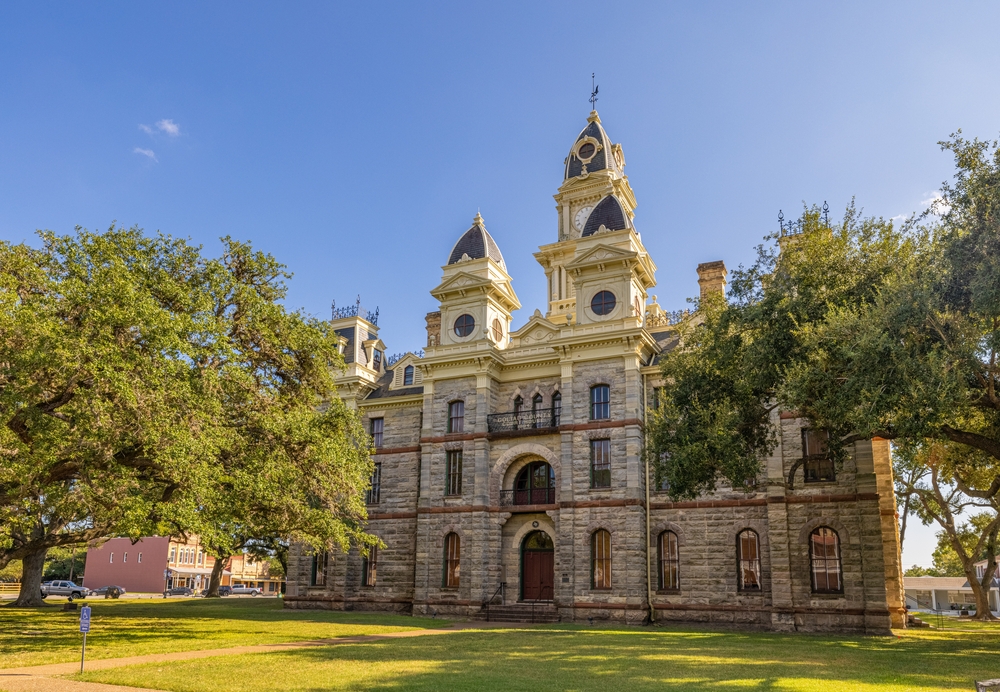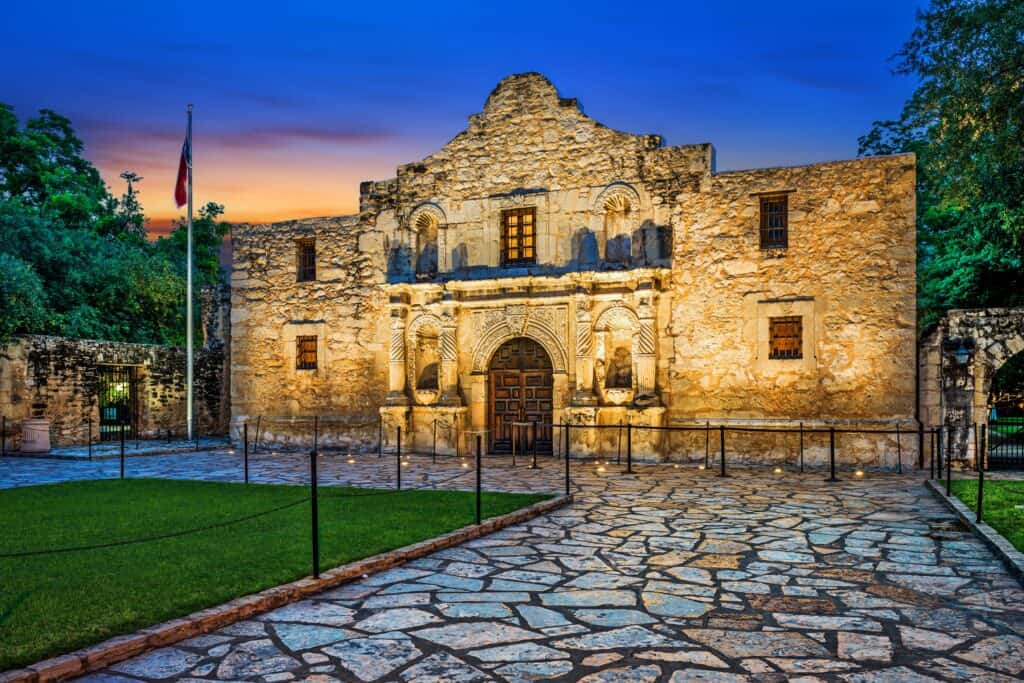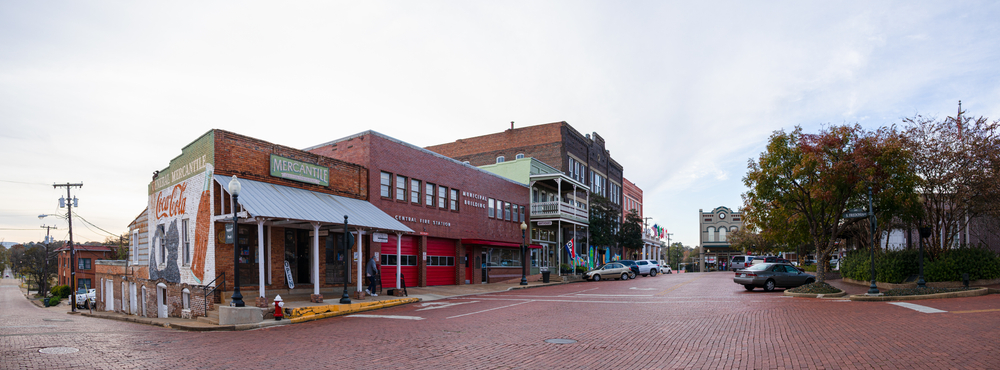Texas is a state steeped in history, with many towns dating back centuries to the days of early explorers and settlers. These towns offer a fascinating glimpse into Texas’s past, showcasing a blend of cultural influences and historic landmarks that have stood the test of time. From bustling cities to small, quiet communities, each has its own unique story to tell. Whether shaped by Native American heritage, Spanish missions, or European settlers, these towns help define the rich tapestry of Texas history.
Castroville

Castroville, often called the “Little Alsace of Texas,” was founded in 1844 by Henri Castro, a French diplomat and empresario. Located in Medina County, the town was settled by Alsatian immigrants from the Rhine region of France, who brought their unique cultural traditions and architectural styles to Texas. Its historic district features over 90 preserved structures built by the original settlers, showcasing Alsatian craftsmanship. The St. Louis Catholic Church, completed in 1870, is a centerpiece of the town’s heritage and remains a place of worship today. Covering an area of approximately 2.5 square miles, the town had a population of around 3,000 as of the 2020 Census. It celebrates its Alsatian roots through festivals, cultural events, and culinary traditions, including authentic Alsatian pastries and sausages. Its unique blend of European charm and Texas hospitality makes it a standout among the state’s historic towns.
San Augustine

San Augustine, established in 1833, is one of the oldest towns in Texas, rich in history and tradition. Located in the forests of East Texas, it was a thriving settlement for Spanish and Mexican settlers before becoming important during Texas’s fight for independence. It was a gateway for pioneers and soldiers, serving as a key supply and communication hub during the Texas Revolution. Visitors are captivated by the town’s historic courthouse, the Mission Dolores State Historic Site, and the numerous antique shops on its charming streets. Its rich history is evident in its blend of cultural influences and historical landmarks. It continues to serve as a testament to the enduring legacy of early exploration and settlement in Texas.
San Elizario

San Elizario, located in El Paso County, is another of Texas’s oldest settlements, with origins dating back to 1789. It was established as a Spanish military post and played a critical role in protecting trade routes along the Camino Real. Its San Elizario Presidio Chapel, built in the early 19th century, stands as a testament to its historical significance. It was the county seat of El Paso County until the 1870s before being overshadowed by the growth of El Paso. It has retained much of its historic charm, with a population of just over 9,000 as of the 2020 Census. Its art district and cultural festivals reflect the area’s vibrant heritage. It is celebrated for its unique combination of history, art, and community spirit.
Laredo

Founded in 1755 by Spanish settlers, Laredo is one of Texas’s oldest towns. It was initially named San Jose de Laredo but changed its name after its independence from Mexico. It is located at the confluence of the Rio Grande and Nueces Rivers. It is a great place to visit and learn about the history of Texas. Its rich history is evident in its blend of cultural influences and historical landmarks. It continues to serve as a testament to the enduring legacy of early exploration and settlement in Texas.
Goliad

Goliad, located in Goliad County, is one of the oldest municipalities in Texas, with its origins tracing back to 1749. Established as a Spanish mission and presidio, it was originally named La Bahía before being renamed in honor of Father Hidalgo, a leader in Mexico’s independence movement. It was the site of the infamous Goliad Massacre during the Texas Revolution, a pivotal event in the fight for independence. It covers an area of 1.6 square miles and had a population of 1,908 as of the 2010 Census. Its historic sites, including Presidio La Bahía and Mission Espiritu Santo, attract visitors interested in Texas history. Its location along the San Antonio River has long been a strategic and cultural asset. It remains a symbol of Texas’s rich colonial and revolutionary heritage.
Austin

Austin, the capital of Texas, wasn’t permanently settled by the Europeans until the 1830s, but the first Spanish mission was built in 1730. Prior to this, nomadic tribes of Tonkawas, Comanches, and Lipan Apaches camped and hunted along the creeks in the area for hundreds of years. Its rich history is evident in its blend of cultural influences and historical landmarks. It continues to serve as a testament to the enduring legacy of early exploration and settlement in Texas.
San Antonio

San Antonio, founded in 1718, is one of the oldest cities in Texas and serves as a cultural and historical hub. Located in Bexar County, it began as a Spanish mission and presidio designed to convert Native Americans to Christianity and protect Spanish interests in the region. Its mission system, including the iconic Alamo, played a vital role in the development of the area. It covers an area of 505 square miles and had a population of over 1.5 million as of the 2020 Census. It was a focal point during the Texas Revolution and later became a center of commerce and migration. Its historic districts, such as the King William Historic District, showcase its architectural legacy. Today, it blends its rich history with a thriving economy and vibrant cultural scene.
Nacogdoches

Nacogdoches, often referred to as “The Oldest Town in Texas,” was settled by Europeans in 1716 when the Spanish established a mission in the area. Located in Nacogdoches County, it covers an area of approximately 27.01 square miles. As of the 2010 Census, it had a population of 32,996. However, the town’s history predates European settlement, as it was originally inhabited by the Caddo Indians. It played a crucial role in Texas history, serving as the site of several key events during the Texas Revolution. Its historic downtown area is home to numerous preserved 19th-century buildings, showcasing the town’s architectural heritage. Today, it is a vibrant community that balances its historical roots with modern growth and development.
Ysleta

Ysleta, now a community within El Paso, Texas, holds the distinction of being the oldest continuously occupied settlement in the state. Established in 1680 as a Spanish mission, it served as a refuge for Spanish conquistadors, Tigua Indians, and Franciscan clerics fleeing the Pueblo Revolt. The Ysleta Mission, recognized as the oldest continuously operated parish in Texas, stands as a testament to the area’s deep historical roots. In 1880, it was recognized as a city and briefly served as the county seat of El Paso County. However, following local disagreements, the county seat moved to El Paso in 1883, leading to its municipal government dissolving in 1895. Today, it is an integral part of El Paso, reflecting a rich blend of cultural influences and historical significance. The community continues to honor its heritage through various cultural events and the preservation of historical sites.
Presidio

Presidio, located in Presidio County, is recognized as the oldest town in Texas, with European settlement dating back to 1535. Spanish explorer Álvar Núñez Cabeza de Vaca and his companions established one of the first European settlements in the area during their expedition. It was officially established in 1683 and has since been a significant site for trade and cultural exchange between various indigenous groups and European settlers. Today, it covers an area of approximately 2.6 square miles and had a population of 4,426 as of the 2010 Census. Its strategic location along the Rio Grande has made it a vital point of connection between the United States and Mexico. Its rich history is evident in its blend of cultural influences and historical landmarks. It continues to serve as a testament to the enduring legacy of early exploration and settlement in Texas.
This article originally appeared on Rarest.org.
More from Rarest.org
10 Unexpected Items That Skyrocketed in Value Over Time

Some items start out as ordinary purchases but unexpectedly gain immense value over time. Whether due to nostalgia, cultural significance, or scarcity, these once-common objects have become prized treasures in collectors’ markets. Read More.
16 Elusive Big Cats That Roam the World`s Densest Jungles

The world’s jungles are home to some of the most elusive and mysterious big cats. These majestic creatures often hide in the shadows, making them difficult to spot even in the densest of forests. Read More.
10 Exotic Island Birds Found Nowhere Else on Earth

Islands are home to some of the most unique and fascinating birds on Earth, many of which can’t be found anywhere else. These exotic island birds have evolved in isolation, adapting to their specific environments, making them truly one-of-a-kind. Read More.
